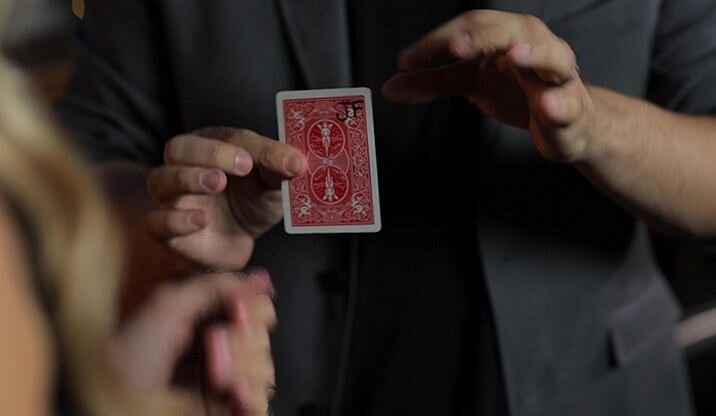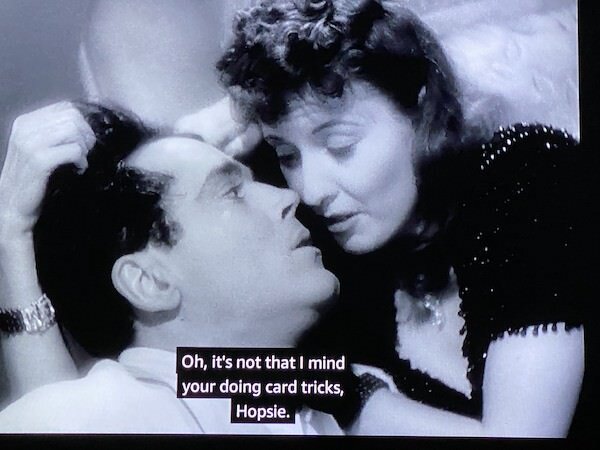Until August...
/Okay, it’s that time of the month (my menses), where I’m going to split until August.
Don’t imagine me taking a 10 day vacation every month. It’s just the time when I shift the focus from the blog to the newsletter (and the next book, but that’s an all month thing).
I was just reflecting on how much of an idiot I am. Coming into this season of The Jerx, I was saying, “I need to cut-down on the amount of content I’m putting out.” And somehow the method I came up with for doing that was to go from 12 post a month to 20, and go from four newsletters per year to ten. I’m a dipshit.
I introduced the Second Helping feature last month where people can advertise their book or multi-trick video release for free on this in exchange for letting us help ourselves to the second best thing on the release (see the details here).
This month, Brandon Toh kind of broke the system by giving me something to share which people can already get for free. So it doesn’t really fit in with the premise of this feature.
You can download the full booklet from Brandon at his site (you might as well, it’s free—or “name your own price” which for magicians is “free.”). He believes the second best thing in the book is the effect Decja Vu. Check it out here.
If you’d like to offer something from your (not free) release in a future installment of Second Helpings, you can just email me and we’ll set it up.
Perhaps I judged Bolted too harshly in last Friday’s post. At least that’s what Michael Weber wrote in to suggest. He writes:
You are usually open minded and willing to consider alternative approaches to magic, so your reaction to Bolted was a bit of a surprise.
Back in 1994 I was practicing Houdini's Water Torture Cell in my magic den when one of the glass side panels broke.
It sent a torrent of water through my apartment and the four apartments directly below mine.
Wooden props like the Vampire Block and Card Duck were spared because they floated.
Books, magazines, manuscripts, posters, playbills and photographs did not fare as well.
One of the non-magic losses was all my wedding photos, except for the one picture I kept in my everyday-carry Le Paul wallet.
Because it was the only surviving photo of that special day, I used strong hardware to secure it inside a protective plastic holder.
I am not trying to claim any priority in the idea, but the fact they've recently hit on something I've done for decades may suggest you were a little quick to criticize.
He’s right. I’m wrong. I just didn’t have the creativity to see that it actually makes perfect sense to keep something precious to you in a clear case with bolts going through it. In fact, the only issue I have with Bolted now is: too few bolts. Get a baker’s dozen or so of those bolts running through their card to really make sure it’s in place for good.
Michael proves that old Dai Vernon quote correct…
I just cracked myself up. I was watching Asi Wind’s Vanishing Inc Lecture. And he said something like, “And then you ask them to write down something you couldn’t know. Like their dog’s name, or the name of the first person they kissed.”
And I said, “Or the name of the first dog they kissed.”
And I’ve been delighted by that for a good 8 minutes.
It’s super late though and everything is funny to me at this time of night.
Perhaps you can put it in your show. Maybe as one of those moment of faux humility the pros sometimes script into their performance.
“Now I’d like you to write down something I couldn’t know. Like the name of the first dog you kissed or something like that. And what I’m going to do is… wait… what’s going on? Huh? What did I say? Oh my god, how embarrassing. I meant to say, ‘Like the name of your dog or the name of the first person you kissed.’ How silly of me. And I’m supposed to be the one with the super-powered mind! Hahaha! Oh boy. What a charming mistake on my part.”
“But seriously, write down something I couldn’t know. If you did kiss a dog, hell, write down the dog’s name! Hahaha. What a totally fun spontaneous moment! Perhaps you didn’t even kiss the dog. Maybe you just gave him a hand-job. Or got him off in some other way. Maybe you have some ‘rule’ about only kissing when you’re in love. You’re like a Julia-Roberts-in-Pretty-Woman-style prostitute. So you sucked that dog’s dick or ate out his furry little asshole or something, right? Hahaha. Get your face all up in there. ‘Ahhgahhgahhgahh. Yumyumyumyumyum.” Who knows? Whose to say? We’re just having fun here. Hey, maybe you were on the receiving end of a multi-dog gang-bang and all holes were filled with hot dog cock. I don’t know. It happens. And it makes my job more difficult because I have to think of which of those dogs you’d be likely to think about. You see what I’m saying? Haha. Hey, do we have fun at a Joshua Jay show or what?”
Okay, beat it. See you in August.














